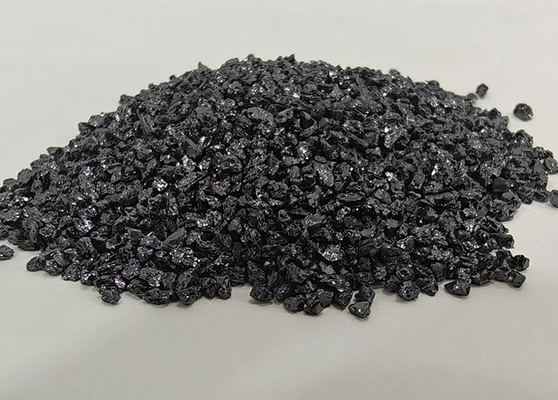When it comes to polishing, grinding, or surface finishing, selecting the right abrasive is critical. Whether you're working with metal, glass, or composite materials, the abrasive type directly affects product quality, processing efficiency, and cost. This guide breaks down the key categories and how to choose the best abrasive for your application.
Types of Abrasives
- Non-metallic abrasives: Examples include quartz sand, copper ore sand, river sand, glass beads, and corundum . These are commonly used for their wide availability, but they tend to wear out quickly and may generate more dust during operation.
- Steel cut wire shot: Typically made from stainless steel or tire wire, this type of abrasive is known for its long service life, low dust emission, and high efficiency. It's a popular choice for shot blasting and surface cleaning.
- Alloy steel shot: Ideal for cleaning and strengthening metal surfaces. This abrasive offers good shape retention and balanced impact force, although it will eventually fracture with extended use.
- Stainless steel shot: Rust-resistant and available in cut or round forms, it's widely used for surface treatment of non-ferrous metals like aluminum and brass. It provides a clean, matte finish while maintaining the original color of the metal.
How to Match Abrasives with Material
The most suitable abrasive depends on the material you're processing. For example, when grinding tungsten carbide, silicon carbide wheels generate excessive heat and wear, which can lead to microcracks. In contrast, diamond grinding wheels handle these materials better due to their superior hardness and minimal thermal expansion.
However, diamond abrasives should be avoided on steel. At temperatures above 600℃, diamond's carbon atoms react with the iron, causing rapid wear and chemical degradation. For these cases, alternatives like CBN (cubic boron nitride) or ceramic abrasives are preferred.
Wet vs. Dry Grinding
Wet grinding is generally more efficient and less damaging to both the abrasive and the workpiece. It reduces heat buildup, minimizes clogging, and can increase the service life of your abrasive by up to 40%. For high-precision applications, wet grinding is highly recommended.
Choosing the Right Grit Size
Grit size impacts both finish and efficiency. Coarser grits (e.g., F24) remove material quickly but leave a rougher surface. Finer grits (e.g., F120 and above) offer a smoother finish but may slow down production and increase the risk of wheel clogging. For operations like insert grinding or final polishing, finer grits are essential.
Selecting the Bond Type
Bonding agents hold abrasive grains together and affect the wheel's hardness, cutting speed, and shape retention. Common bond types include:
- Resin bond: Flexible and cost-effective, ideal for carbide tools and general-purpose grinding.
- Metal bond: Extremely durable and heat-resistant, suitable for brittle ceramics and heavy-duty grinding.
- Ceramic bond: High precision and thermal stability, often used in aerospace and semiconductor industries.
- Electroplated bond: Excellent for profiling and ultra-precise applications, especially in mold making and micro-machining.
Conclusion
Choosing the right abrasive isn't just about cost — it's about performance, safety, and durability. By understanding your material, grit size requirements, and bonding method, you can dramatically improve surface finish quality and process efficiency. Whether you're sourcing for sandblasting, cutting, or polishing, the best abrasive is the one matched to your job.
Request a Quote or Sample
Popular Products
Grünes Siliziumkarbid
View DetailsSchwarzes Siliziumkarbid
View Details